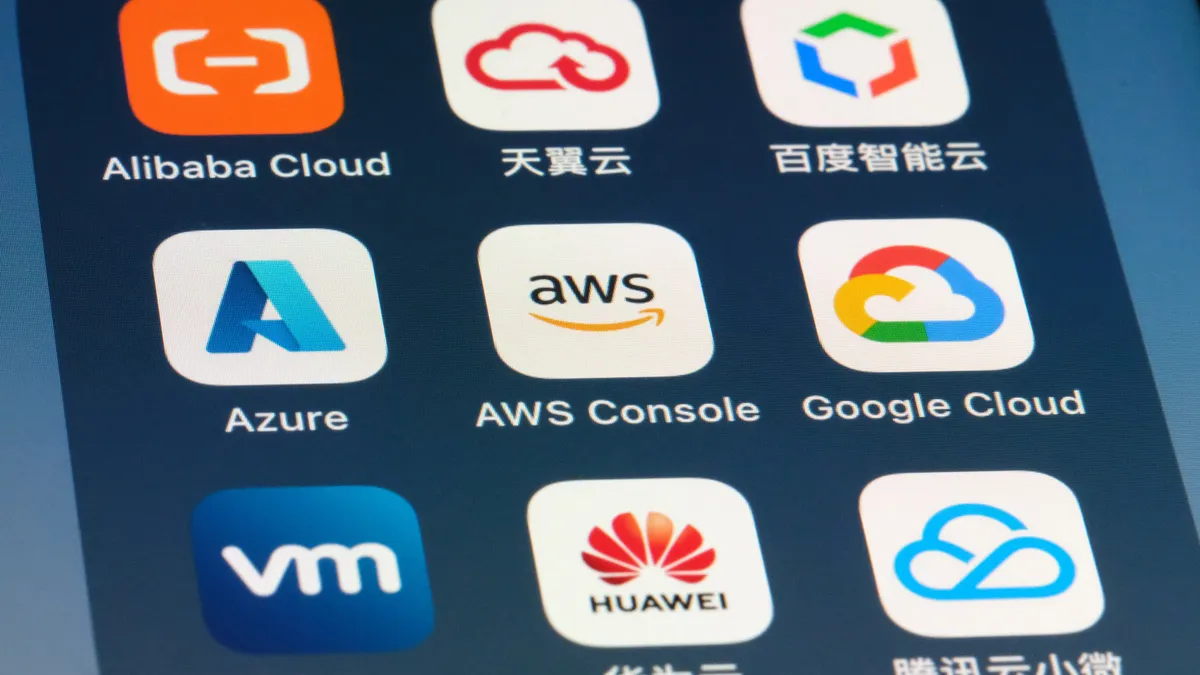Since deploying its first resource to AWS ten years ago, Liberty Mutual Insurance has shifted nearly three-quarters of its workloads to a multicloud environment. The sixth largest property and casualty insurer has also shuttered one of its on-prem data centers and is targeting another.
“We've done the low hanging fruit — now we're getting to the harder applications,” Angela “AJ” Wasserman, product owner of cloud financial operations at Liberty Mutual, said in an interview with CIO Dive. “We've evolved to where we have a cloud-first mindset.”
By 2024, the company is aiming for a one-quarter reduction in annual IT expenses and eventually eliminate up to 40% of fixed-run costs through cloud computing — a lofty goal, especially in the current economic climate.
Agility, efficiency and optimization are just three of the more common buzzwords attached to modernization at scale. The headaches that come with deployment failures and cost overruns only emerge later, once the process is underway.
Liberty Mutual has over 45,000 employees, 2,000-plus applications and a technology staff of 5,000, but managing spend on a resource as elastic as cloud wasn’t the initial challenge. Achieving cost transparency was the first order of business, Wasserman said.
“Essentially, we've opened up this unlimited capacity with the public cloud and given them access to our wallet,” Wasserman said. “We had to understand what our migration costs would look like once we got to the public cloud.”
Wasserman’s journey to leading Liberty Mutual’s FinOps team began on the business side, reporting to the CFO. As the company’s cloud footprint grew, her team moved from finance to technology and the office of the CIO, she said.
In the four years she’s been tracking cloud cost, the company has used FinOps strategies to trim an estimated 20% from what it would have spent otherwise.
“We want to get to the point where we don't have those savings opportunities because we're doing the right things from the start,” Wasserman said.
FinOps in action
Cloud cost control “starts with overall governance and discipline and the culture around financial management,” said Paul Sussex, Americas digital and financial services cloud leader at consulting firm EY. “FinOps provides both an operating structure and a discipline routine to drive cost transparency and cost management in cloud.”
Wasserman’s team, which includes two data analysts and a solutions engineer, implemented a straightforward tagging strategy for each deployment that allows them to direct optimization and security recommendations to application owners.
“We only require a couple of tags, and we tie that back to a system of record,” she said. “We can then get critical information to the senior leader on the development team aligned to that application.”
They are also comparison shopping among cloud providers to optimize savings and services, and moving to deploy automation tools.
“We want to take the tasks off the engineers’ plate so that they can focus on delivering value to the business,” Wasserman said.
Optimization through automation
The next major move in Liberty Mutual’s cloud cost control efforts involves harnessing the power of automation to further optimize.
Wasserman trimmed spending by shutting down nonproduction and development environments during periods of inactivity, specifically on nights and weekends.
“Originally we set up scheduling services and told our teams that they could take advantage of them, but we didn’t see adoption,” Wasserman said. “So we started opting in teams and scheduling them based on where they were geographically. They could then opt out if they had a reason."
Now, she’s tracking the company’s use of its Amazon RDS databases.
“When a database hasn’t been connected to in a couple of weeks, we stop it,” she said. “Eventually, we’ll delete some of that.”
In addition to cleaning out unnecessary storage, the company has deployed the open source cloud resource management tool Cloud Custodian and put cost data in the hands of its technology staff.
“We started displaying cost in the developer console, so when they go to deploy their resources they can see how their spending has changed month over month,” Wasserman said. “We’re putting right-sizing recommendations right where they work.”
The goal is to embed a cost-control mindset in the engineering process.
“When a team does take action, they can see the results immediately and share that with their business partners,” Wasserman said. “They can say, ‘hey, we prioritized this cost optimization effort, we saved this much money and now you can invest it in more features and get more business value.”






















